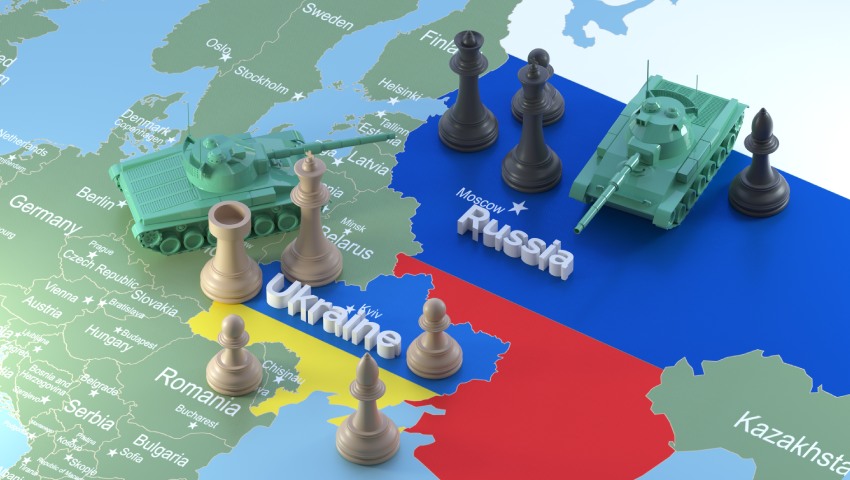Whether it was Russia’s slow advance (and speedy withdrawal) from Kiev, the loss of ground surrounding Kharkiv or the destruction of the Moskva cruiser – the recent conflict in Ukraine has presented no shortage of lessons in the art of warfighting for the modern military theorist.
To continue reading the rest of this article, please log in.
Create free account to get unlimited news articles and more!
Yes, the Russian bear has been humbled during the war in Ukraine. Its failures come from vastly different sources too – failures of overhyped technology such as the much-flaunted active protection systems have only compounded intelligence breakdowns and hubris from the Kremlin.
Though recent analysis has argued that Russia’s fatal flaw lies within the DNA and makeup of the military itself – with Russia’s force structure fundamentally unsuitable for the modern battlefield.
In War on the Rocks this week, Michael Kofman, director of the Russia Studies Program at CNA, and Rob Lee, senior fellow in the Foreign Policy Research Institute’s Eurasia Program, shone a light on how Russia’s recent military reforms profoundly undermined Russian warfighting capabilities.
Like many militaries, in recent decades Russia sought to commence of a process of military professionalisation – reducing the nation’s costly overreliance on conscripts.
The Russian Strategy of Social Development of the Armed Forces of the Russian Federation published in 2008 codified this goal, identifying that future wars could only be won with a more streamlined military force.
“The Russian military then rolled back some of these reforms starting in 2013, not only because several proved deeply unpopular, but also because the force was considered too small for a regional or large-scale war against a superior opponent,” Kofman and Lee argue.
The new military was to be a syncretisation of professional forces – bolstered by conscripted units and was formed with the goal of optimising all-arms warfare, with units operating intimately within battle groups consisting of “infantry, armor, artillery, and supporting assets”.
However, ambitious growth targets designed to increase the number of operational battle groups in the Russian military decreased the number of soldiers in each unit.
“It appears the Russian armed forces achieved this target by reducing the number of personnel in each battalion, including the number in each company, which has had a significant effect on operations in Ukraine,” the pair continue.
“In practice, this means that many Russian motorized rifle squads only have enough soldiers to operate their vehicles, but not to dismount and fight on foot. Indeed, there have been cases where Russian BTR and BMPs only had a crew of three, without any dismounts.”
The shortage of dismounted soldiers to operate in concert with vehicle or tank crews adds context to the Armageddon of Russian armour in the wake of the invasion, as Ukrainian SOF-teams operate Javelins with impunity.
According to Rob Johnson in the US Army War College Quarterly Journal, this poor staffing in battle groups has left Russian troops unable to achieve operational objectives.
“The assembly of battalion tactical groups was too weak to penetrate far. The attrition of losses or breakdowns caused much-smaller units to arrive piecemeal at their objectives, with disastrous results. The vast columns of road-bound vehicles heading toward Kyiv were thus halted, offering a ripe target for Ukrainian drone or air attacks,” Johnson notes.
As the war in Ukraine continued to rage, outcomes can only worsen for invader and defender alike as the Russian military seeks to exert control over population centres.
The deficiencies highlighted by these analysts would only magnify in large-scale urban operations, where plans pivot on a dime and entrenched defenders can mount multi-vector irregular operations to continually harangue their beleaguered adversaries.
This was espoused by adjunct senior fellow at the Center for a New American Security Margarita Konaev and Kirstin Brathwaite, assistant professor at James Madison College at the Michigan State University in Foreign Policy.
“Dense urban terrain full of multistory buildings, narrow roads, and underground spaces also limits the use of concentrated armored vehicles, forcing militaries to disperse their soldiers and leaving them vulnerable to sniper fire and ambushes,” the pair argues.
While Russia has sustained considerable losses throughout the fighting, all historical evidence illustrates that it will only get worse.
“The Second Battle of Fallujah in 2004, for example, was the bloodiest battle of the Iraq War for U.S. troops, with 82 people killed and another 600 people wounded in 47 days. Meanwhile, of the estimated 10,000 Iraqi forces killed fighting the Islamic State in Iraq, it is possible that as many as 8,200 were killed during the nine-monthlong Battle of Mosul.”
Despite this analysis, Johnson’s observation of Russian urban operations is even more pessimistic, noting that the Russian army is likely going to avoid direct contact in urbanised environments to avoid additional losses. Rather, it will undertake siege warfare and shell the cities at a distance – creating worse humanitarian outcomes for Ukrainian civilians.
“By contrast, 19 years earlier in Iraq, US forces had been far more precise and efficient than the Russians. The Russian model of urban warfare appears to be a rerun of the war in Syria, with similar levels of destruction,” he noted.
Get involved with the discussion and let us know your thoughts on Australia’s future role and position in the Indo-Pacific region and what you would like to see from Australia's political leaders in terms of partisan and bipartisan agenda setting in the comments section below, or get in touch with

 Login
Login







